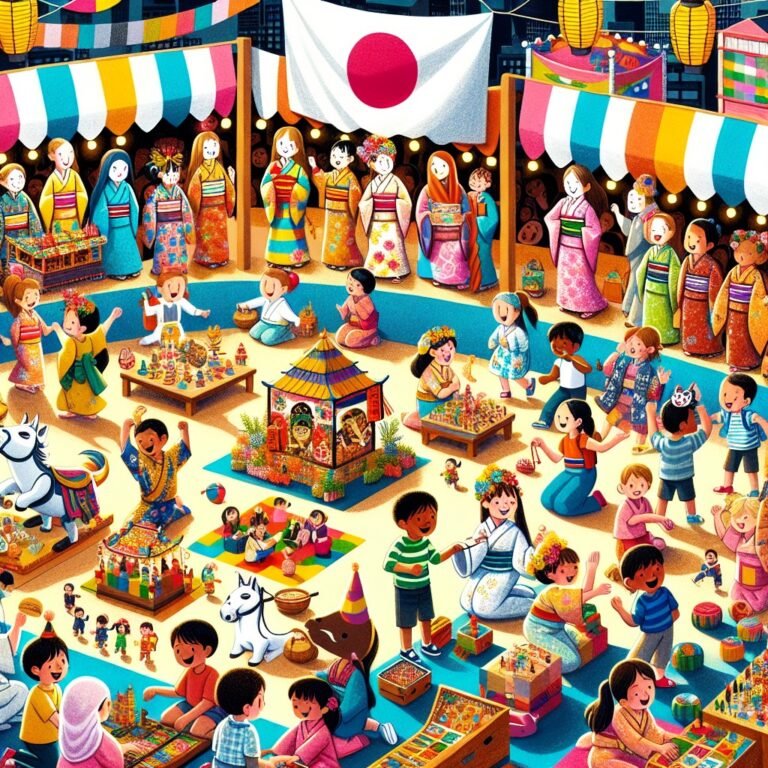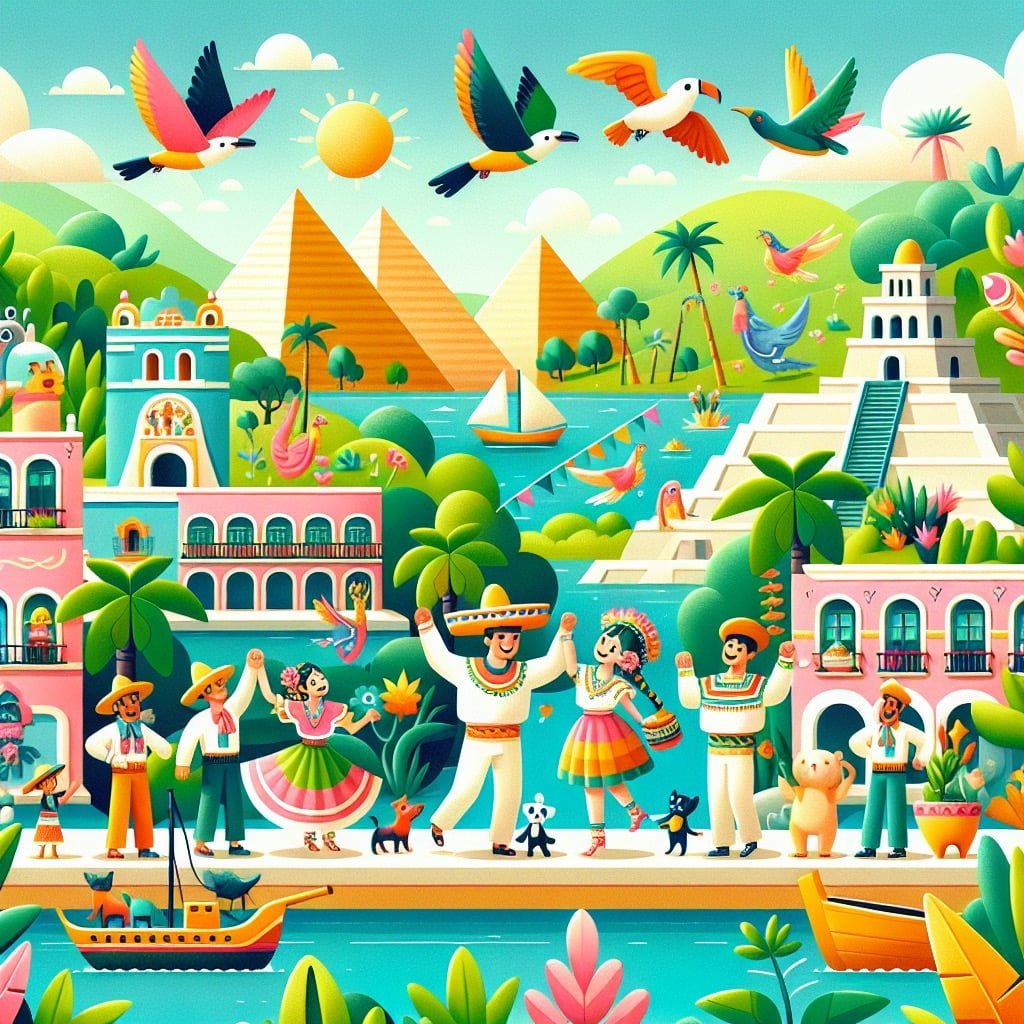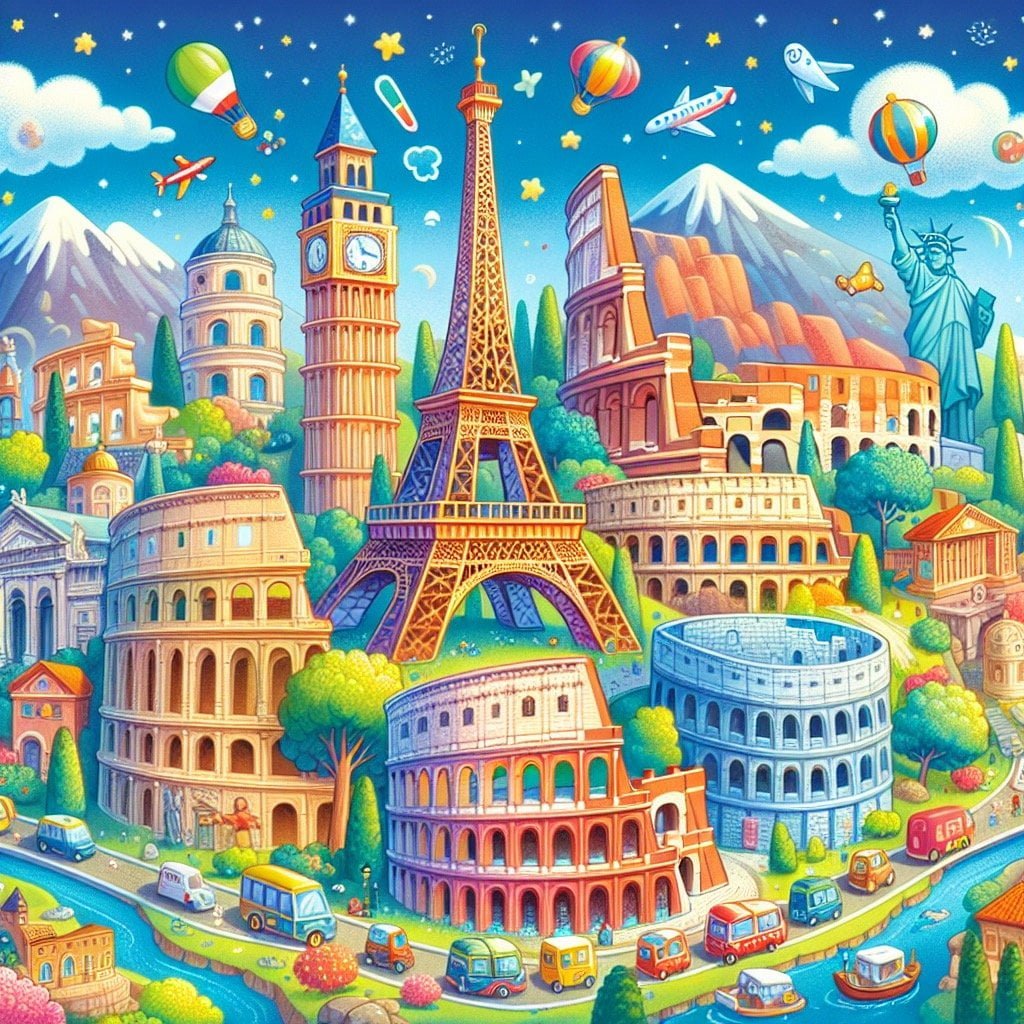Welcome to a fascinating exploration of Japan Facts For Kids! Dive into the rich culture, traditions, and natural wonders of Japan through a series of fun facts that will captivate young minds and spark curiosity. From the symbolic cherry blossoms that represent new beginnings to the breathtaking autumn colors of the Kōyō season, each fact offers a glimpse into the enchanting world of Japan. Discover the wonders of Mount Fuji, the excitement of Sumo Wrestling, the efficiency of the Bullet Train, and the beauty of Japan’s 6,000 islands. Let’s embark on a journey of learning and discovery as we unravel the fascinating facets of Japan that make it a truly unique and captivating destination for kids of all ages. So, get ready to be amazed by the magic of Japan with these intriguing facts specially curated for young explorers!
Japan Facts For Kids
1. Cherry Blossoms Symbolize New Beginnings

For younger kids: Cherry blossoms are pink flowers that bloom in spring and look like beautiful pink clouds!
For older kids: Sakura, or cherry blossoms, hold a special place in Japanese culture as they symbolize the transient nature of life and the fleeting beauty of the world.
Detailed explanation:Cherry blossoms are a beautiful and iconic symbol in Japanese culture, representing new beginnings, renewal, and the transience of life. In Japan, the blooming of cherry blossoms, known as “sakura”, is a highly anticipated event that marks the arrival of spring. The delicate pink and white blossoms blanket the trees, creating a stunning display that attracts tourists from around the world.
The significance of cherry blossoms in Japan dates back centuries, and the practice of hanami, or flower viewing, has been a cherished tradition for generations. This custom involves gathering with friends and family under the blooming cherry trees to appreciate their beauty and celebrate the arrival of spring. The fleeting nature of the blossoms serves as a powerful reminder of the transient nature of life, and the importance of cherishing each moment.
In addition to their cultural significance, cherry blossoms also hold symbolic meaning in Japanese art and literature. They are often used to represent the beauty of nature, the ephemeral nature of life, and the concept of mono no aware, or the pathos of things. Cherry blossoms have inspired countless poems, paintings, and other works of art throughout Japan’s history.
Overall, cherry blossoms symbolize new beginnings and the cyclical nature of life in Japan. The sight of these beautiful flowers blooming each spring serves as a reminder of the ever-changing seasons and the importance of embracing change and transformation. It is no wonder that cherry blossoms hold a special place in Japanese culture and continue to captivate people of all ages around the world. Japan Facts For Kids.
Japan Facts For Kids
2. Mount Fuji is an Active Volcano
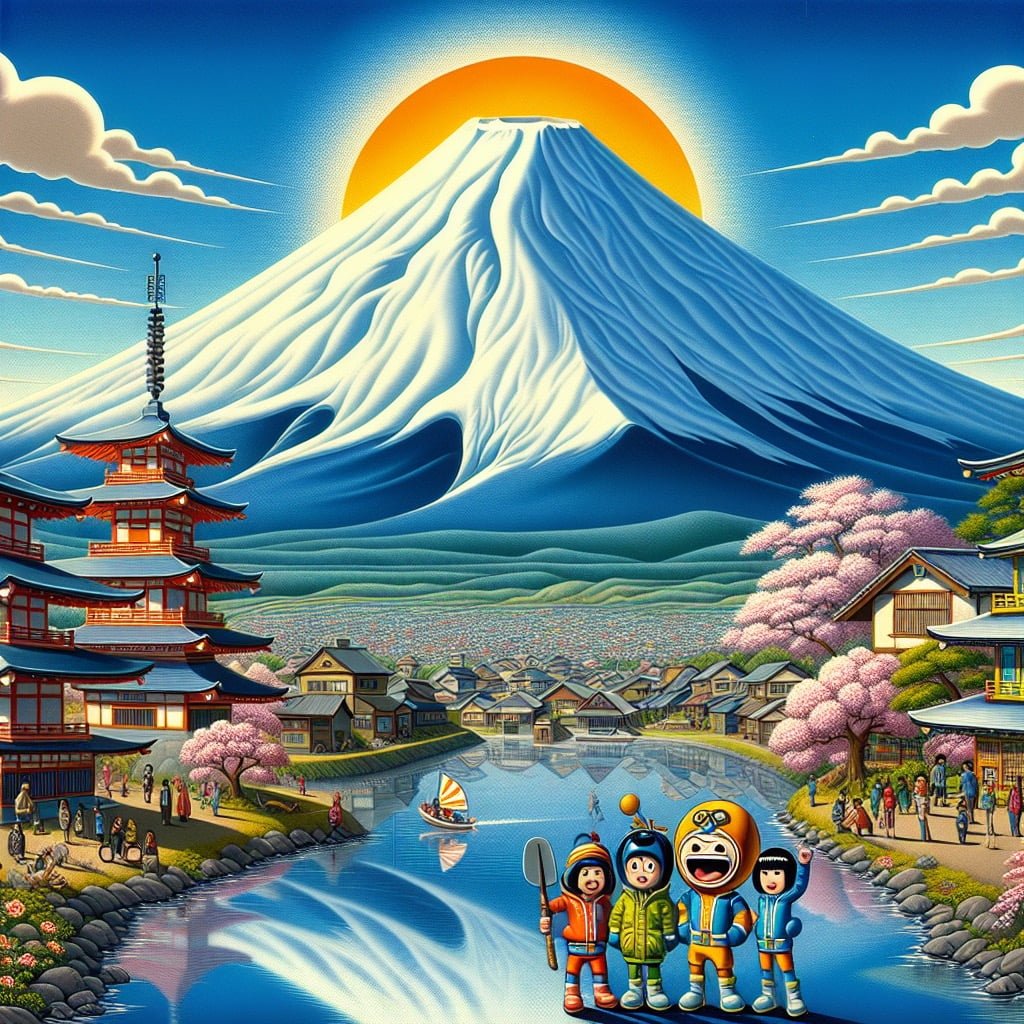
For younger kids: Mount Fuji is a really big mountain that people love to climb!
For older kids: Mount Fuji is an iconic symbol of Japan and is considered an active stratovolcano, last erupting in 1707.
Detailed explanation:One of the most iconic landmarks in Japan, Mount Fuji is a majestic and symmetrical volcano located on Honshu Island. Standing at 3,776 meters (12,389 feet) tall, Mount Fuji is not only the highest mountain in Japan but also an active volcano. Despite its serene appearance, Mount Fuji is classified as an active stratovolcano, meaning it has the potential to erupt in the future.
Throughout history, Mount Fuji has erupted several times, with the most recent eruption occurring in 1707 during the Edo period. This eruption, known as the Hoei eruption, caused widespread damage to the surrounding areas and left a large crater at the summit of the mountain. Despite its status as an active volcano, Mount Fuji is considered a low-risk volcano by experts, with a relatively low probability of a major eruption in the near future.
Despite the potential risks associated with living near an active volcano, many people in Japan choose to reside in the shadow of Mount Fuji. The volcano’s rich soil and breathtaking scenery make it a popular destination for tourists and hikers, attracting millions of visitors each year. In fact, Mount Fuji is so revered in Japanese culture that it has been designated a UNESCO World Heritage site.
In conclusion, Mount Fuji’s status as an active volcano adds to its allure and mystique, making it a must-see destination for anyone visiting Japan. Its history of eruptions serves as a reminder of the power and unpredictability of nature, while also highlighting the resilience of the Japanese people in the face of natural disasters.
Japan Facts For Kids are important to understand the geological significance and cultural importance of Mount Fuji in Japan. By learning about the volcano’s active status and historical eruptions, children can gain a deeper appreciation for the natural wonders of their country and the importance of being prepared for potential disasters.
Japan Facts For Kids
3. Sumo Wrestling is Japan’s National Sport
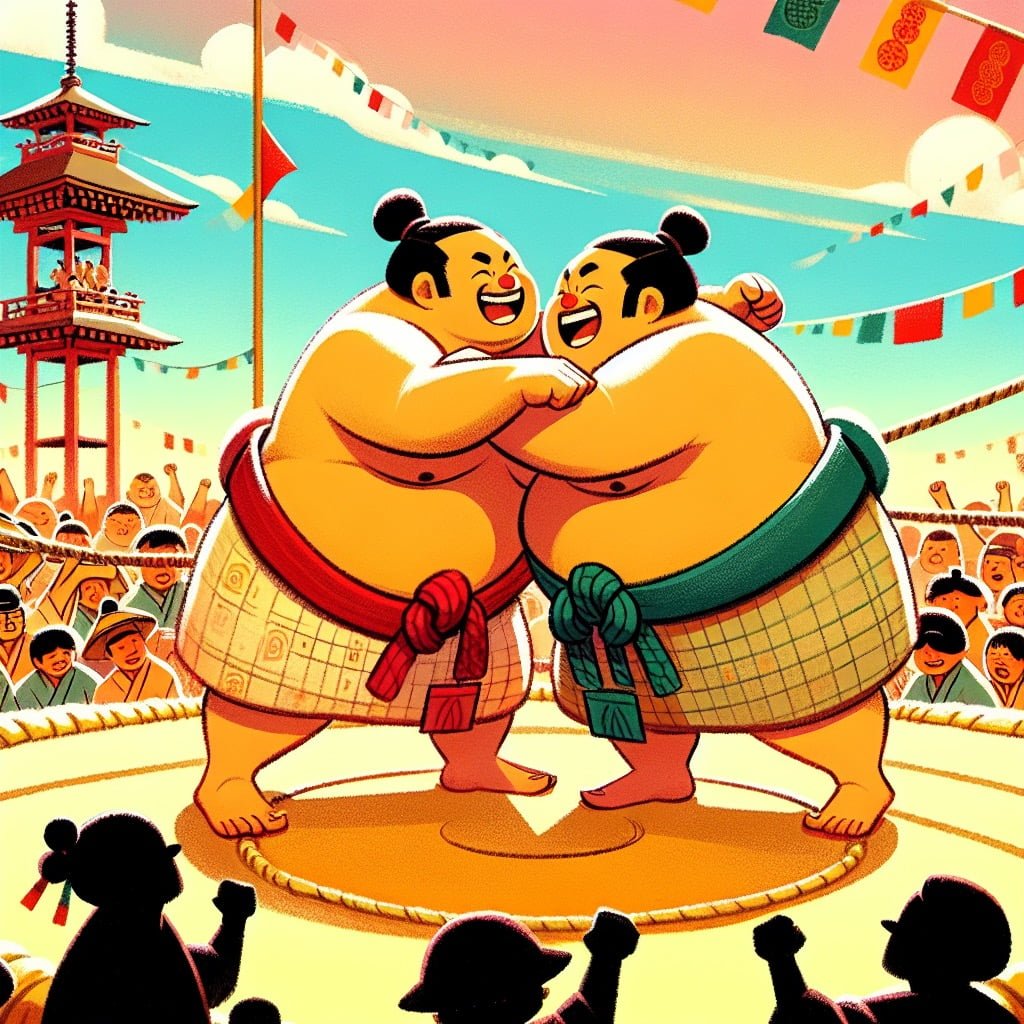
For younger kids: Sumo wrestlers wear special belts and try to push each other out of a ring!
For older kids: Sumo, Japan’s national sport, is a form of wrestling that dates back hundreds of years and is rich in tradition and ritual.
Detailed explanation:Sumo wrestling holds a special place in Japanese culture as the country’s national sport. Dating back to ancient times, sumo has evolved into a highly ritualized and traditional form of wrestling that is both physically demanding and steeped in rich history.
One interesting aspect of sumo wrestling is its association with Shinto, Japan’s indigenous religion. Before each sumo match, the wrestlers perform a purification ritual to cleanse the ring and ward off evil spirits. This ritual, known as the dohyō-iri, is a fascinating glimpse into the spiritual beliefs that underpin Japanese society.
Another key aspect of sumo wrestling is the importance placed on discipline, respect, and humility. Wrestlers, known as rikishi, adhere to strict training regimens and codes of conduct both inside and outside the ring. This emphasis on discipline and respect is reflective of larger Japanese cultural values, making sumo wrestling not just a sport, but a window into the unique customs and traditions of Japan.
In addition to its cultural significance, sumo wrestling is a popular spectator sport in Japan, drawing large crowds to tournaments held throughout the year. Fans of all ages gather to watch the matches unfold, cheering on their favorite wrestlers and marveling at the skill and strength on display in the ring.
In conclusion, sumo wrestling is much more than just a sport in Japan – it is a reflection of the country’s traditions, values, and spiritual beliefs. For kids learning about Japan, exploring the world of sumo wrestling offers a fascinating glimpse into the rich tapestry of Japan’s cultural heritage. Japan Facts For Kids are incomplete without delving into the world of sumo wrestling and all that it represents.
Japan Facts For Kids
4. Japan is Home to Over 6,000 Islands

For younger kids: Japan is made up of many islands, big and small, that are fun to explore!
For older kids: Japan is an archipelago comprising over 6,800 islands, with Hokkaido, Honshu, Shikoku, and Kyushu being the four largest.
Detailed explanation:Japan Facts For Kids: Japan is a fascinating country that is made up of over 6,000 islands, although the four largest islands – Honshu, Hokkaido, Kyushu, and Shikoku – make up about 97% of the country’s total land area. These islands are located in the Pacific Ocean, off the eastern coast of Asia, and vary greatly in size and topography.
One of the most well-known islands in Japan is Honshu, which is home to major cities like Tokyo, Kyoto, and Osaka. This island is also where you can find iconic landmarks such as Mount Fuji and the historic temples of Kyoto. Hokkaido, the northernmost island, is known for its snowy winters and beautiful natural landscapes, making it a popular destination for skiers and outdoor enthusiasts. Kyushu, in the southwest, is known for its hot springs, volcanoes, and beautiful beaches. Shikoku, the smallest of the four main islands, is known for its scenic countryside and the 88 Temple Pilgrimage.
In addition to these major islands, Japan is also home to thousands of smaller islands, many of which are uninhabited or sparsely populated. These islands are often surrounded by crystal-clear waters and offer fantastic opportunities for diving, snorkeling, and exploring untouched nature.
Overall, the diverse islands of Japan offer a unique blend of tradition, modernity, and natural beauty that make it a truly special place to visit and learn about. Japan Facts For Kids can be a great way to introduce children to the rich culture and history of this island nation.
Japan Facts For Kids
5. Sushi Was Originally Created as a Method of Food Preservation

For younger kids: Sushi is yummy fish and rice wrapped in seaweed!
For older kids: The history of sushi dates back to the 8th century when it was developed as a means of preserving fish by fermenting it with rice and salt.
Detailed explanation:One of the most interesting Japan Facts For Kids is that sushi was originally created as a method of food preservation. This traditional Japanese dish has a long history that dates back to the 8th century. In ancient Japan, before the invention of refrigeration, fish was preserved by fermenting it with rice and salt. This fermentation process prevented the growth of bacteria and preserved the fish for long periods of time.
Over time, this preservation method evolved into what we now know as sushi. The rice was no longer fermented, but seasoned with vinegar, sugar, and salt to create a tangy and flavorful base for the fish. The fish used in sushi was also no longer exclusively fermented, but fresh fish would also be used.
Sushi became popular in Japan during the Edo period (1603-1868) when it was sold as fast food from street stalls. It wasn’t until the early 19th century that sushi chefs began to perfect the art of making sushi as we know it today, with fresh fish and perfectly seasoned rice.
Today, sushi is enjoyed all over the world for its delicious flavors and delicate presentation. It has become a symbol of Japanese cuisine and culture, and is a favorite food for many people. So, the next time you enjoy a delicious piece of sushi, remember that it was originally created as a method of food preservation in ancient Japan.
Japan Facts For Kids
6. The Bullet Train (Shinkansen) Reaches Speeds of 320 km/h

For younger kids: The bullet train is a super-fast train that travels across Japan really quickly!
For older kids: The Shinkansen is a network of high-speed railway lines in Japan, known for its punctuality and speeds of up to 320 km/h (199 mph).
Detailed explanation:One of the most impressive feats of engineering in Japan is the iconic Shinkansen, also known as the Bullet Train. This high-speed rail system has captured the attention of people around the world with its incredible speed and efficiency. As part of the extensive railway network in Japan, the Shinkansen reaches speeds of up to 320 km/h, making it one of the fastest trains in the world.
The Shinkansen was first introduced in 1964, just in time for the Tokyo Olympics, and has since become synonymous with technological innovation and progress in Japan. The train operates on dedicated tracks, allowing it to travel at high speeds without the need to slow down for other train traffic. This separation also contributes to the safety and punctuality of the Shinkansen, with very few accidents or delays reported over the years.
The design of the Shinkansen is aerodynamic, with a pointed front that reduces drag and allows the train to reach such high speeds. The tracks are also designed to minimize vibrations and noise, providing a smooth and comfortable ride for passengers. The efficiency of the Shinkansen is further enhanced by its frequent departures and on-time performance, making it a popular choice for both domestic and international travelers in Japan.
Overall, the Shinkansen is a shining example of Japan’s commitment to innovation and excellence in transportation. With its impressive speed of 320 km/h, the Bullet Train continues to be a marvel of modern engineering and a symbol of Japan’s dedication to providing efficient and reliable public transportation options for its citizens and visitors alike. Japan Facts For Kids are full of interesting information about this remarkable country and its technological achievements, with the Shinkansen being just one of many fascinating topics to explore.
Japan Facts For Kids
7. Japan is the Birthplace of Anime and Manga
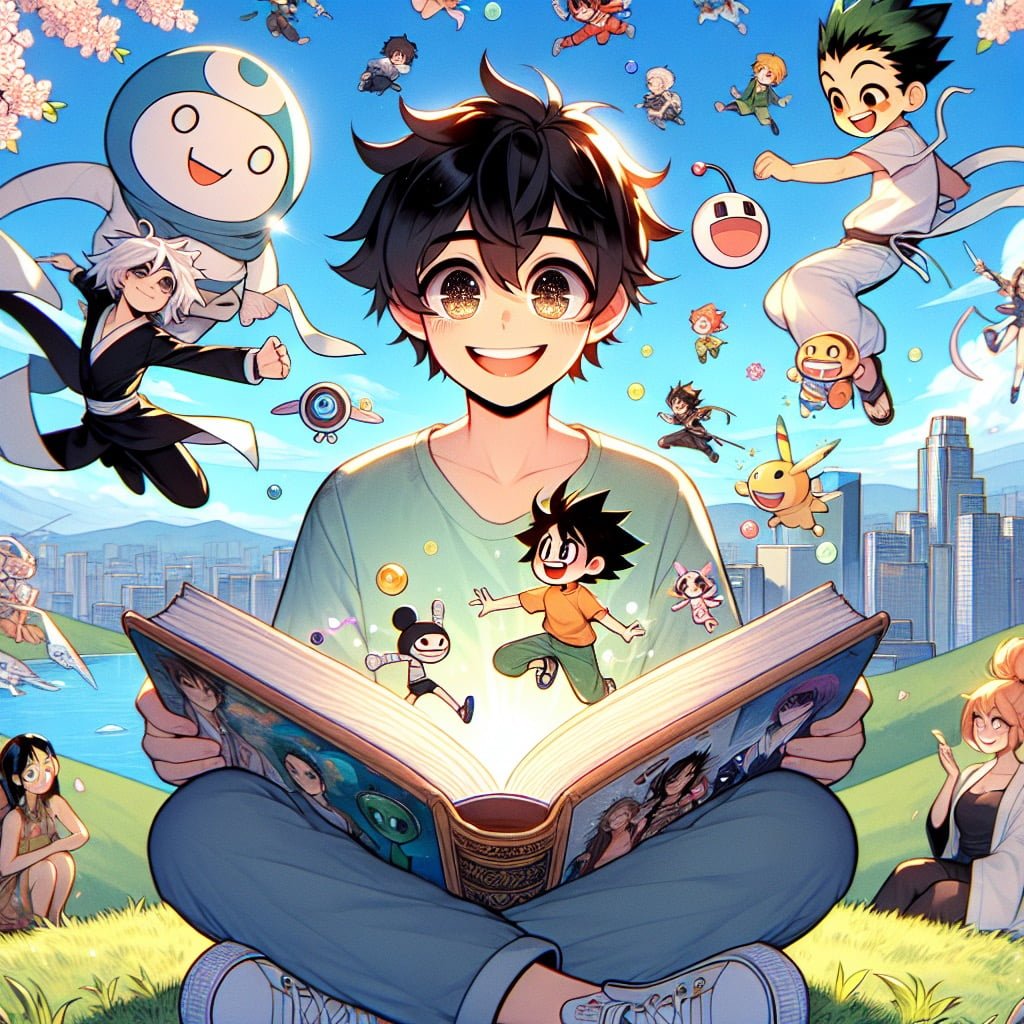
For younger kids: Anime and manga are fun cartoons and comics with awesome stories and characters!
For older kids: Japan has contributed significantly to the global entertainment industry with its iconic anime and manga, loved by fans worldwide.
Detailed explanation:Japan Facts For Kids
Japan is widely known as the birthplace of anime and manga, two popular forms of entertainment that have captivated audiences worldwide. Anime refers to animated television shows and films, often featuring colorful artwork, fantastical themes, and vibrant characters. Manga, on the other hand, are Japanese comic books or graphic novels that cover a wide range of genres, from action and romance to science fiction and fantasy.
One of the key reasons why Japan has become synonymous with anime and manga is its rich cultural history and tradition of storytelling. Japanese artists and creators have long been known for their innovative and creative approach to visual storytelling, drawing inspiration from traditional Japanese art forms such as ukiyo-e prints and kabuki theater. This unique blend of old and new influences has helped to shape the distinct visual style and narrative techniques found in anime and manga.
Another important factor in Japan’s dominance in the anime and manga industry is the country’s strong focus on creativity and originality. Japanese creators are encouraged to experiment with new ideas and push the boundaries of storytelling, leading to the creation of iconic series like “Naruto,” “One Piece,” and “Dragon Ball.” These franchises have not only become international sensations but have also inspired countless artists and creators around the world.
In conclusion, Japan’s status as the birthplace of anime and manga can be attributed to its rich cultural heritage, innovative storytelling techniques, and a strong emphasis on creativity and originality. For kids and adults alike, exploring the world of anime and manga is a fun and exciting way to learn more about Japan and its unique contributions to popular culture. So next time you pick up a manga or watch an anime series, remember that you are taking part in a tradition that has its roots in the fascinating world of Japan Facts For Kids.
Japan Facts For Kids
8. Aokigahara Forest is Known as the “Suicide Forest”
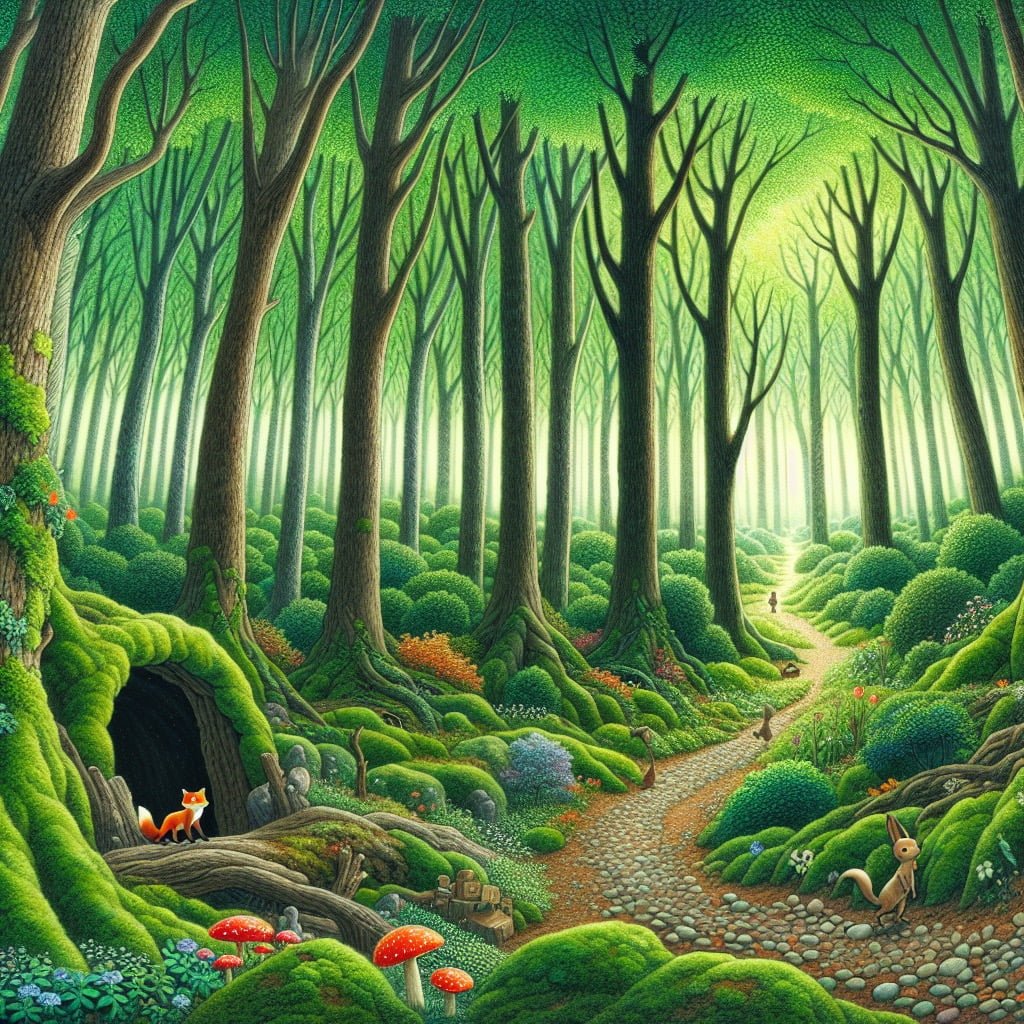
For younger kids: Aokigahara Forest is a mysterious place with lots of trees and caves.
For older kids: Aokigahara, located at the base of Mount Fuji, is sadly known for its association with suicides and has become the subject of various legends and stories.
Detailed explanation:Aokigahara Forest, located at the base of Mount Fuji in Japan, has gained a notorious reputation as the “Suicide Forest.” This dark moniker is due to the unsettlingly high number of suicides that occur within its dense, eerie woods each year. The forest’s reputation as a site for tragic endings has been perpetuated by media coverage and popular culture, with movies and documentaries further highlighting its morbid association.
The reasons behind the high suicide rate in Aokigahara Forest are complex and multifaceted. Some speculate that the dense vegetation and rugged terrain of the forest provide a sense of isolation and privacy, making it an appealing place for individuals contemplating taking their own lives. Additionally, the forest’s reputation as a place where others have ended their lives may serve to normalize and validate suicidal ideation for those already struggling with mental health issues.
Despite efforts by local authorities and volunteer groups to prevent suicides in Aokigahara Forest, the problem persists. Signage urging visitors to seek help and emphasizing the value of life have been installed throughout the forest, but individuals still venture into its depths with tragic intentions.
It is important to remember that Aokigahara Forest is not just a site of tragedy, but also a natural wonder with a rich ecological history. Visitors should approach the forest with respect and mindfulness of its dual nature, appreciating its beauty while also acknowledging the devastating toll that suicide has taken within its boundaries. Japan Facts For Kids like these serve as a somber reminder of the complexities of mental health and the need for support and resources for individuals in crisis.
Japan Facts For Kids
9. Japan Has One of the World’s Lowest Crime Rates
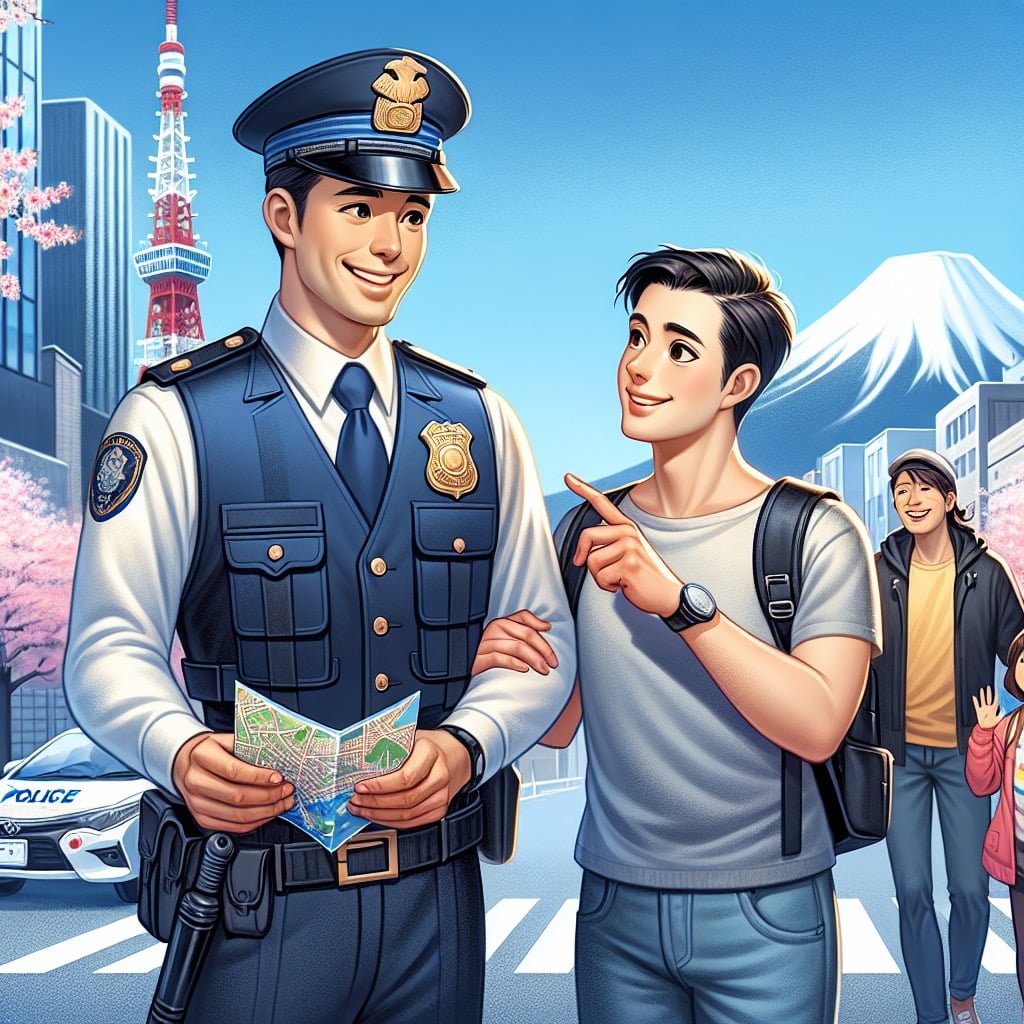
For younger kids: Japan is a very safe place with friendly police officers that help people!
For older kids: Japan boasts one of the world’s lowest crime rates, with an emphasis on community and social harmony.
Detailed explanation:Japan Facts For Kids reveal that Japan is known for having one of the lowest crime rates in the world. This is a fact that often surprises people, especially given the country’s large population and bustling cities. So, how has Japan managed to achieve such low crime rates?
One of the key reasons behind Japan’s low crime rates is its strong emphasis on respect for rules and social harmony. From a young age, Japanese children are taught the importance of following rules, respecting authority, and thinking of the greater good of society. This cultural emphasis on respect and order plays a significant role in deterring criminal behavior.
Additionally, Japan has a highly effective police force and criminal justice system. The police in Japan are known for their professionalism and efficiency, and they are quick to respond to any reports of crime. The justice system in Japan is also known for its fairness and transparency, which helps to uphold the rule of law and deter criminal behavior.
Furthermore, Japan has strict gun control laws, which have helped to significantly reduce gun-related crimes in the country. With limited access to firearms, Japan has much lower rates of gun violence compared to countries with more lenient gun laws.
Overall, Japan’s low crime rates can be attributed to a combination of cultural values, effective law enforcement, and strict gun control measures. It is a testament to the success of Japan’s approach to maintaining social order and ensuring the safety of its citizens.
Japan Facts For Kids
10. Kōyō Season Brings Stunning Autumn Colors to Japan
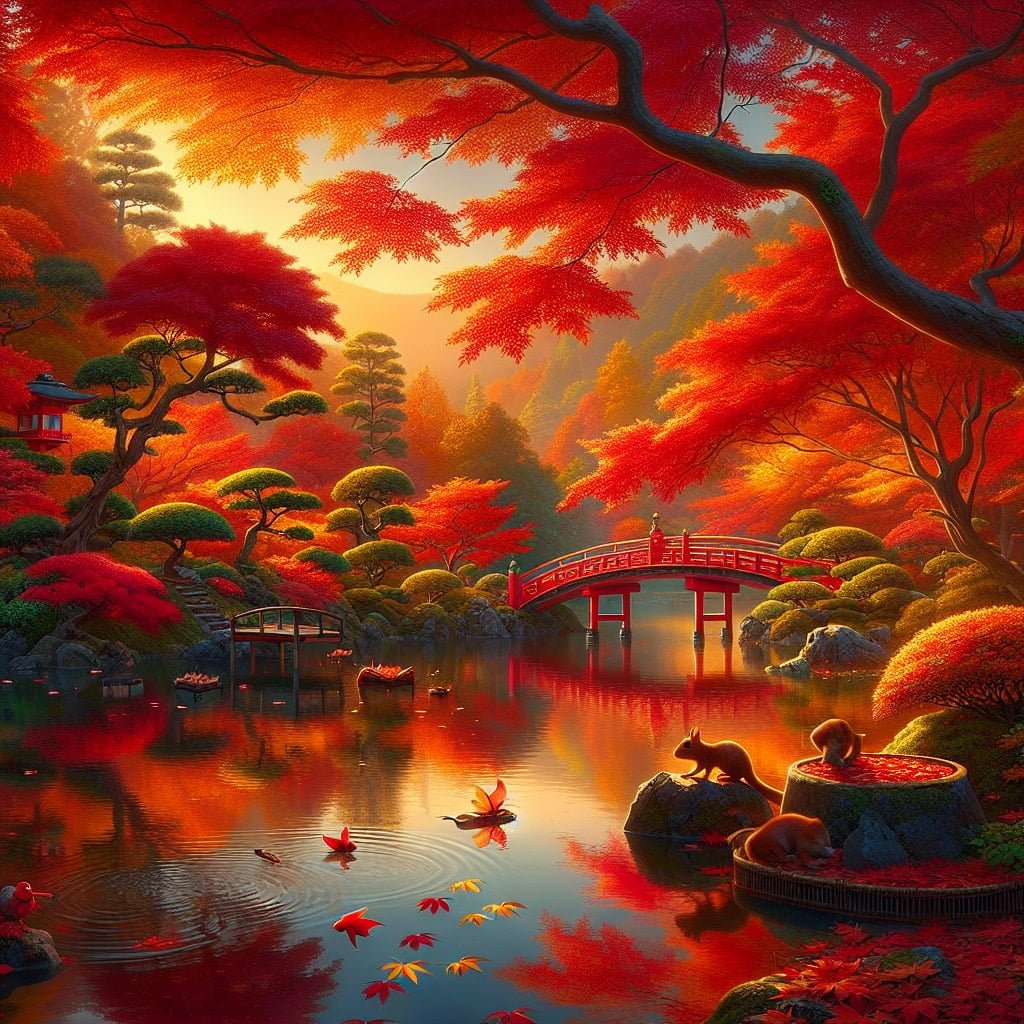
For younger kids: Kōyō season is when the trees turn beautiful colors like red, orange, and yellow!
For older kids: Kōyō, or autumn leaves season, is a time when the foliage in Japan transforms into vibrant hues, creating breathtaking landscapes across the country.
Detailed explanation:Japan Facts For Kids
One of the most stunning natural phenomena in Japan is the Kōyō season, which brings vibrant autumn colors to the country. This season typically occurs from late September to early December, with the peak color change usually happening in November. During this time, the leaves on trees transform from their usual green hue to a dazzling array of reds, oranges, and yellows, creating a breathtaking display of colors across the landscape.
The reason behind this spectacular natural display lies in the changing temperatures and decreasing daylight hours as Japan transitions from summer to winter. As the days grow shorter and the nights become cooler, the chlorophyll in the leaves breaks down, revealing the pigments that were there all along. This process, known as senescence, is what causes the leaves to change color before eventually falling to the ground.
Japan is known for its stunning autumn colors, with popular spots such as Kyoto, Nikko, and Hokkaido attracting visitors from all over the world to witness the vibrant hues of the season. Many tourists flock to these regions during the Kōyō season to take in the beauty of nature and partake in traditional activities such as maple leaf viewing, known as momijigari.
In conclusion, the Kōyō season in Japan is a magical time when nature puts on a show with its brilliant autumn colors. This colorful spectacle is a reminder of the beauty and diversity of Japan’s natural landscape, making it a must-see destination for anyone looking to experience the wonders of the fall season. Japan Facts For Kids.
Did You Know?
The Japanese are renowned for their impeccable manners and strong sense of respect and etiquette in daily life, making Japan a unique and fascinating destination to visit.
Summary of Japan Facts For Kids
Are you looking to ignite a sense of curiosity and wonder in your child about the world around them? Look no further than Japan! In this blog post, we dive into fascinating facts about Japan that are sure to captivate young minds. From the significance of cherry blossoms to the ancient temples and shrines that tell the story of Japan’s history, there is so much to learn and explore. Not only is Japan a blend of tradition and technology, but it also boasts stunning natural landscapes that will leave children in awe. By delving into the fun and interesting tidbits about Japan, children can develop a deeper appreciation for this enchanting country. So, if you want to spark a sense of curiosity in your child and introduce them to the wonders of Japan, this blog post is a must-read!
Sources and additional information for Japan Facts For Kids
WikipediaBritannicaCIA World FactbookCentral Intelligence Agency (CIA)The World BankUnited Nations Children’s Fund (UNICEF)BBC NewsLonely PlanetCouncil on Foreign RelationsThe World Factbook (CIA)United NationsBBC Country ProfilesLonely PlanetThe World Bank CountriesUNESCO World Heritage CentreCountryReportsGlobalEdge (Michigan State University)Transparency International – The Global Corruption Barometer
